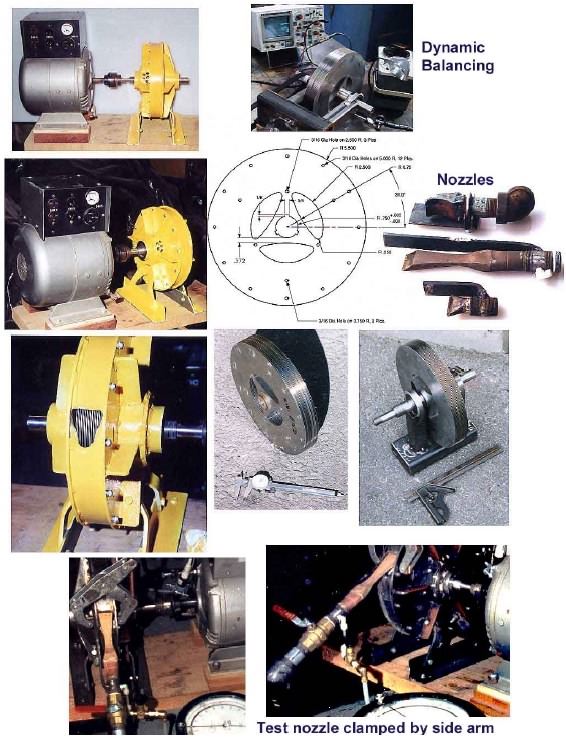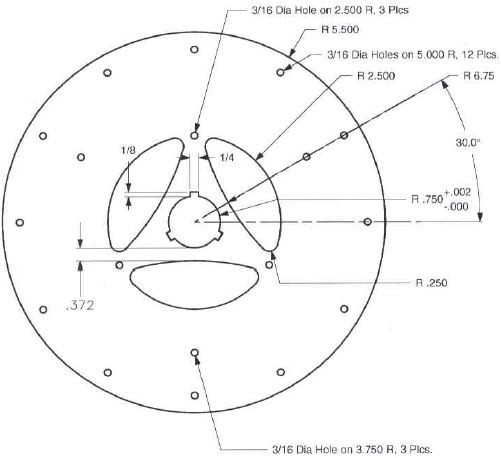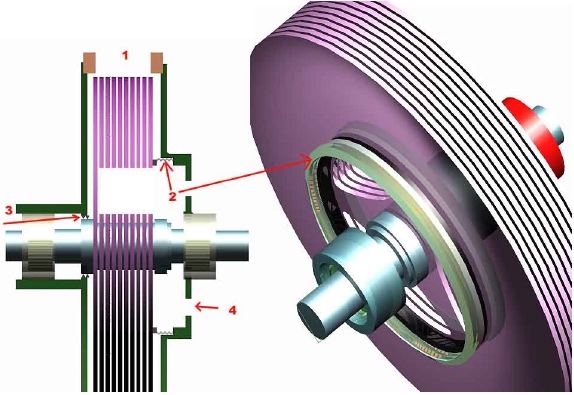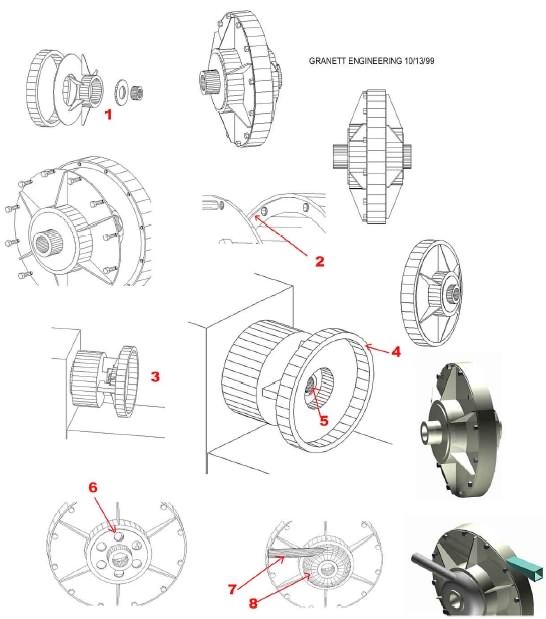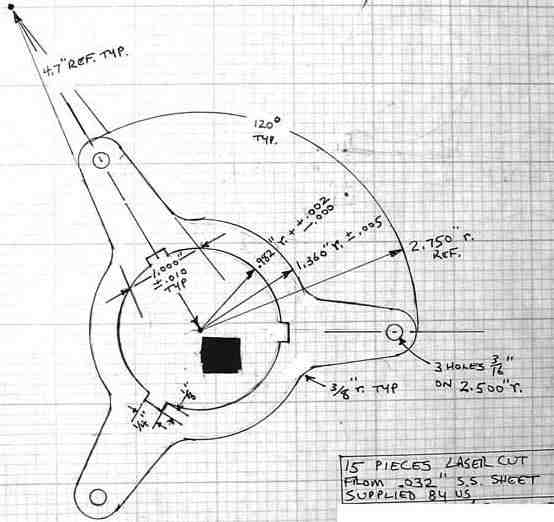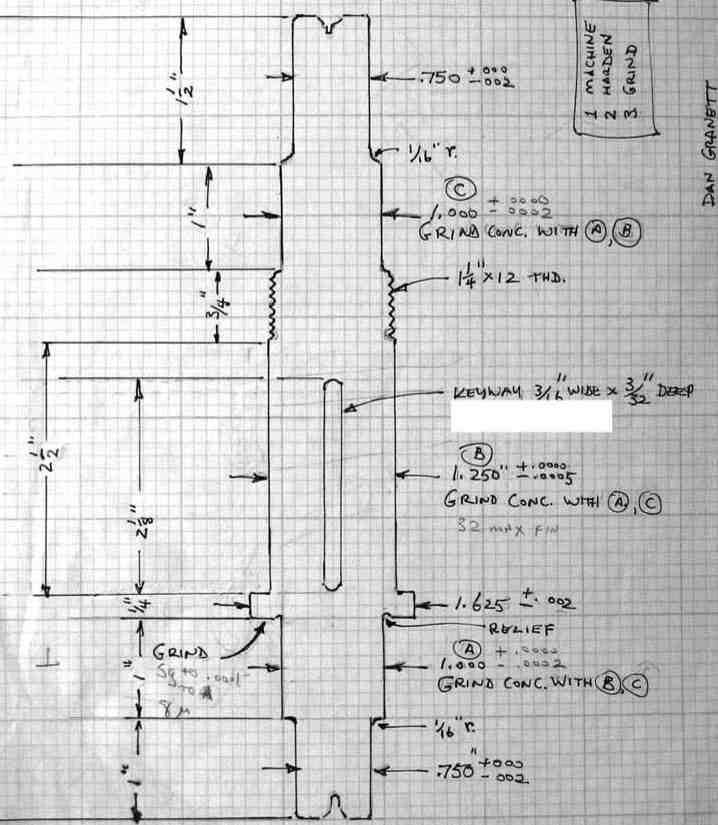Solar Combined Heat Power System
- HABITAT: CEB Press - Sawmill - Living Machines - Modular Housing Units
- AGROECOLOGY: LifeTrac Multi Purpose Tractor - MicroTrac - Power Cube - Agricultural Spader - Agricultural Microcombine - Hammer Mill - Well Drilling Rig - Organoponic Raised Bed Gardening - Orchard and Nursery - Modular Greenhouse Units - Bakery - Dairy - Energy Food Bars - Freeze Dried Fruit Powders
- ENERGY: Pyrolysis Oil - Babington Burner - Solar Combined Heat Power System - Steam Engine Construction Set - Solar Turbine - Electric Motors/Generators - Inverters & Grid Intertie - Batteries
- FLEXIBLE INDUSTRY: Lathe - Torch Table - Multimachine & Flex Fab - Plastic Extrusion & Molding - Metal Casting and Extrusion
- TRANSPORT: Open Source Car
- MATERIALS: Bioplastics
A solar combined heat and power system utilizes the heat of the sun directly, with solar concentrators running a power cycle that has been proven in geothermal plants.
One key is to develop an efficient solar turbine. At Factor e Farm we have access to a 4 kW boundary layer turbine for this purpose, and are presently adopting it for operation on solar steam. Conceptually - the problem is simple - capturing the energy of an expanding gas in a rotor, to convert the energy to electricity. A solar turbine is a tractable problem, and deserves full attention. With 1 kW of insolation from every square meter on earth, such a proposition must be considered seriously. This includes possibilities of thermal storage when the sun does not shine - just do the basic feasibility calculations and convince yourself that this is possible - even for extended periods beyond 12 hour nights. Check out the http://www.shpegs.com/ open source project for further background on a large scale implementation. Note that technical drawings exist for a 50% efficient solar turbine - look for the C. Christopher Newton thesis at http://www.redrok.com/engine.htm#turbine - but fabrication costs need to be proven on such project. All in all, backup power - such as electricity derived from biofuel combustion in an engine - could be used - but it is more interesting to utilize a backup stove that can produce the necessary heat for the turbine cycle. This is especially useful in conjunction with space and greenhouse heating in the winter. Moreover, MIT's Fab Lab has done work in optimizing diesel engines produced by Vigyan Ashram in India (http://cba.mit.edu/projects/fablab/apps.html) - and these may be available for opensourcing. If so, it may be reasonable to produce diesel engines locally at OSE for backup power, and optimizing them for waste vegetable oil operation. Price predictions are $2-4k per balance of system kilowatt.
Collaboration
Review of Project Status
We have chosen the boundary layer turbine (such as the Tesla Turbine) as the working turbine choice, since we identified a working prototype from Granett Engineering.
- 9.07 - preparing technical drawings and materials for second prototype of the Granett turbine
Current Work
Developments Needed
General
Specific
Background Debriefing
Information Work
Hardware Work
Sign-in
Development Work Template
Product Definition
General
General Scope
Product Ecology
Localization
Scaleability
Scaleability is most crucial in this project. We are pursuing a design with a focus on how scale can be achieved with minimal modifications. As such, the system is designed for stand-alone remote power applications (under 1 kW) to home (1 kW) and village (100 kW) scales. If the the BLT is used with other fuel sources, this is prime for mobile applications - vehicles and all devices which require hybrid power drive.
Analysis of Scale
Lifecycle Analysis
Enterprise Options
Development Approach
Timeline
Development Budget
Value Spent
Value available
Value needed
Deliverables and Product Specifications
The Solar Turbine CHP system product package revolves around, (1), a turnkey, scaleable, robust, year-round, solar turbine electricity production system, and, (2), a flexible fabrication infrastructure for the same. Product specifications, in the simplest implementation, are:
- 1 kW electrical output , 6 hours per day average in a sunny climate
- Solar concentrator collectors with water as the working fluid - proven technology
- 8 disk boundary layer turbine as the heat engine - proven technology
- Open source electrical generator - covered in Electric Motors/Generators
- Recirculating water system
- $950/kW material cost for electrical generation, using off-shelf materials
- 128 square foot collector system, 4 panels of 4x8 feet -theoretically good for 4 kW electrical generation - $432
- Glazing - $32/ panel at Menards
- Glazing angle supports: $40
- Structure - 40 feet of 1 1/4" x 1/8" square tubing 90 cents/foot - $36
- Collector - $76
- Tube - 1x6 inch rectangular tube, 1/8" wall -$40
- Insulation - $20
- Glazing -$16
- Turbine $290
- Stainless steel - 10 square feet, .12" thick = $100 in used form
- Shaft - $20
- Bearings - $20
- Hydrodynamic seals - $100
- Casing - $20
- Nozzle - $20
- Bolts - $10
- Generator - $150
- 128 square foot collector system, 4 panels of 4x8 feet -theoretically good for 4 kW electrical generation - $432
Theoretical efficiency: 34%
- Solar collectors - 4% reflection loss from glass, 4% reflection loss for transmission through glass collector enclosure, 10% heat transfer loss to working medium., 20% radiative heat loss, 20% conductive heat loss from working fluid - 58% loss total before reaching turbine
- Turbine - 90% efficient
- Electrical generator 90% efficient
- Overall - .42*.9*.9= .34 efficiency
See the talk page for discussions.
Thermal insolation: 1kW/m^2
All components are based on flexible fabrication open source design
Options:
- Open source grid intertie inverter - see Inverters & Grid Intertie
Also, the solar collectors, turbine, and electrical generator are completely scaleable via modularity, such that system power may be from from 1 to 100 kW
Flexible Fabrication infrastructure:
- XY torch table - $200 in structural materials, 2 screw drives with 2 motors, open source controller
- Competitive analysis - Torchmate
- CO2 or YAG laser, 200W
- Drill and milling machine
Industry Standards
Market and Market Segmentation
Salient Features and Keys to Success
Technical Design
http://www.green-trust.org/junkyardprojects/FreeIC&ECEngines/ModelSteamTurbineDesign.pdf http://www.green-trust.org/junkyardprojects/FreeIC&ECEngines/ModelSteamTurbineDesign.pdf
Product System Design
Diagrams and Conceptual Drawings
Pattern Language Icons
Structural Diagram
Funcional or Process Diagram
Workflow
Technical Issues
Deployment Strategy
Performance specifications
Calculations
Design Calculations
Yields
Rates
Structural Calculations
Power Requirements
Ergonomics of Production
Time Requirements
Economic Breakeven Analysis
Scaleability Calculations
Growth Calculations
Technical Drawings and CAD
CAM Files
Component Design - Boundary Layer Turbine (BLT)
The Boundary Layer Turbine is based on a prototype from collaborator Dan Granett of Granett Engineering. The 12 inch diameter turbine produced 4 kW of electric power in test runs, at a cost of $500 in materials plus fabrication costs.
Diagrams
- Overview of turbine, generator coupling, turbine disks, nozzles, testing, balancing:
- Technical drawing of turbine disks:
- Conceptual diagram of turbine seals, 16 total in prototype (4 kW output without proper seals)
- Turbine case and fabrication diagrams:
- The disks were made of .059" thickness material. The spacers were .032".
- The shaft:
- Notes on correcting shaft, spacer, and disk alignment, as there is a discrepancy in the above diagrams:
- change the center hole radius to .625" on the disk and the spacer, that will bring the holes into line with the shaft
- there should be 3 shaft key slots instead of 2.
- change the shaft slots to 1/4" x 1/8"
Research Literature
Background theory:
- Experimental Investigation of the Flow Between Corotating Disks - R.Adams, W.Rice Transactions of the ASME p.844 Sept 1970
- Laminar Throughflow of a Fluid Containing Particles Between Corotating Disks - Truman, Rice, Jankowski Journal of Fluids Engineering vol.101 p.87 Mar. '79
- Laminar Throughflow of Varying-Quality Steam Between Corotating Disks - Truman, Rice, Jankowski Transactions of the ASME p. 194 vol.100 June '78
Look at the cover page of these papers
- Numerical Simulation of the Flow Field in a Friction-Type Turbine (Tesla Turbine) - A.Ladino - School of Engineering National University of Colombia, Institute of Thermal Powerplants Vienna University of Tecnology - 2004.
Look at the Numerical Simulation (Tesla Turbine - 1913)
